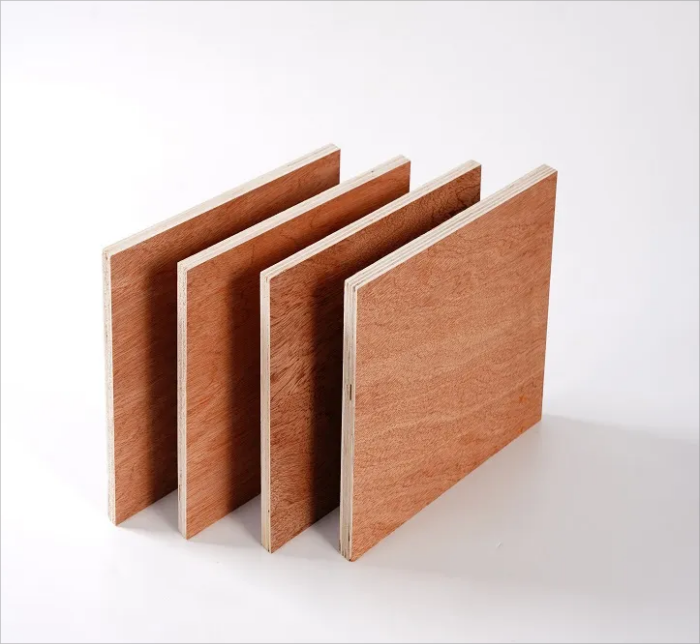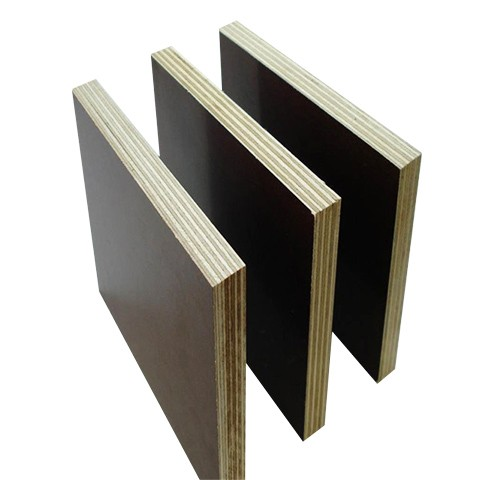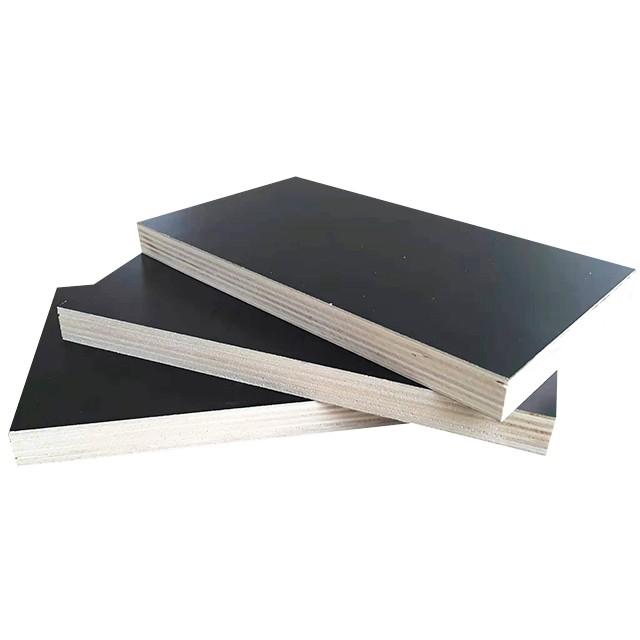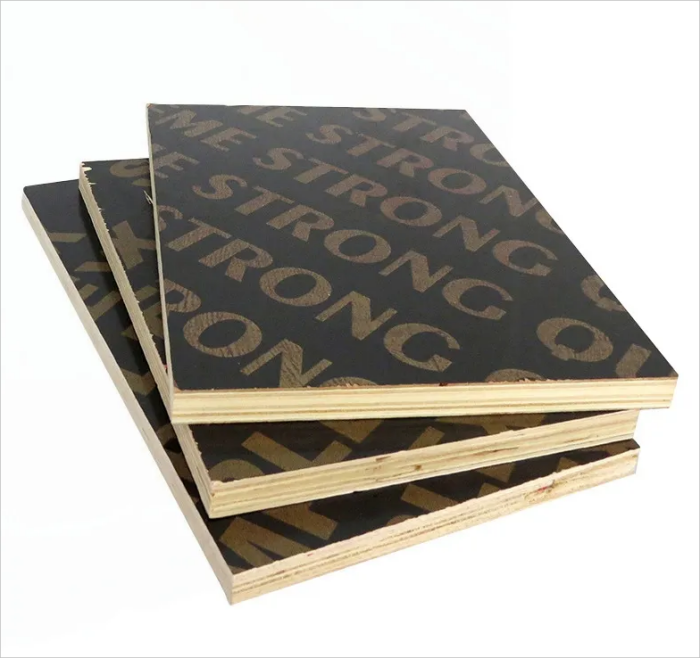What is plywood ?
Plywood can be classified into soft plywood (masson pine, larch, red pine ,etc) and hardwood plywood ( bass wood, birch, ash, etc).
From the perspective of water resistance, plywood can be divided into four categories:
Class I – Weather resistant and boiling water resistant plywood (WBP), using phenolic resin adhesive. Suitable for outdoor areas such as aviation, ships, carriages, packaging, concrete formwork, hydraulic engineering, and other places with good water resistance and climate resistance.
Class II moisture resistant plywood (MR), capable of short-term cold water immersion, suitable for indoor use under normal conditions. Made by bonding with low resin content urea formaldehyde resin or other adhesive with equivalent properties. Used for furniture, packaging, and general construction Building purpose.
Class III water resistant plywood (WR), which can be soaked in cold water, can withstand short period of hot water immersion, and has antibacterial properties, but is not resistant to boiling. It is made of urea formaldehyde resin or other adhesive with equivalent properties. Used for interior decoration and packaging of carriages, ships, furniture, and buildings.
Class IV non moisture resistant plywood (INT), used indoors under normal conditions, has a certain bonding strength. Made by bonding with bean glue or other adhesive with equivalent properties. Mainly used for packaging and general purposes. The tea box needs to be made of bean glue plywood
The plywood used for concrete formwork film faced plywood is belong to Class I plywood with high weather and water resistance, and the adhesive is Phenolic resin adhesive is mainly processed from poplar, birch, pine, eucalyptus etc.
1. Film faced marine plywood structure and specifications
(1) Structure
The wooden plywood used for formwork is usually composed of odd layers such as 5, 7, 9, and 11, which are bonded and cured by hot pressing
Type. The texture directions of adjacent layers are perpendicular to each other, and usually the texture direction of the outermost surface board is parallel to the long direction of the plywood surface. Therefore, the long direction of the entire plywood is strong, and the short direction is weak. Attention must be paid when using it.
(2) Specifications
Specifications and dimensions of film faced plywood for formwork
| Thickness (mm) | Layers | Width(mm) | Length (mm) |
| 12 |
At least 5 |
915 | 1830 |
| 15 |
At least 7 |
1220 | 1830 |
| 18 | 915 | 2135 | |
| 1220 | 2440 |
2. Film faced plywood bonding performance and bearing capacity
(1) Bonding performance
The adhesive for plywood used in film faced marine plywood is mainly phenolic resin. This type of adhesive has high bonding strength and water resistance,Excellent heat and corrosion resistance, with outstanding boiling water resistance and durability.
Bond Strength Index Values for Film Faced Marine Plywood
| Varieties of trees | Bond Strength(N/mm2) |
| Birch | ≧1.0 |
| Apitong(Keruring),Pinus massoniana Lamb, | ≧0.8 |
| Lauan,poplar | ≧0.7 |
When purchasing plywood for concrete formwork, you must first check whether it belongs to Class I plywood,
Check whether the batch of plywood has used phenolic resin adhesive or other adhesives with equivalent properties. If tested when the conditions are limited and the bonding strength test cannot be conducted, small piece can be quickly and simply distinguished by boiling water.
Use a small piece of 20mm square sawn from plywood and boiled in boiling water for 2 hours. Using phenolic resin as the test piece will not peel off after cooking, while the test piece using pulse formaldehyde resin as the adhesive will peel off after cooking。
(2) Bearing capacity
The load-bearing capacity of wooden plywood is related to its thickness, static bending strength, and elastic modulus
| Varieties of trees | Modulusof Elasticity (N/mm2) | MOR(N/mm2) |
| Lauan | 3500 | 25 |
| Masson pine, larch | 4000 | 30 |
| Birch | 4500 | 35 |
Standard values of static bending strength and elastic modulus ofshuttering plywood(N/mm2)
| Thickness (mm) |
MOR |
Modulus of Elasticity | ||
| Horizontal direction | Vertical direction | Horizontal direction | Vertical direction | |
| 12 | ≧25.0 | ≧16.0 | ≧8500 | ≧4500 |
| 15 | ≧23.0 | ≧15.0 | ≧7500 | ≧5000 |
| 18 | ≧20.0 | ≧15.0 | ≧6500 | ≧5200 |
| 21 | ≧19.0 | ≧15.0 | ≧6000 | ≧5400 |
Building cpncrete shuttering plywood can be divided into ordinary shuttering plywood and film faced plywood .
The plain shuttering plywood surface is treated with phenolic resin with strong waterproofing.When pouring concrete components using plain shuttering plywood such as arch bridges, beams, and columns, only standardized stiffness and integers should be met, and then gray decoration should be applied to the surface. Mainly used in civil and general industrial buildings.
Film faced marine plywood is formed by covering a layer of laminnation paper on a good artificial board .The surface of the film faced plywood is smooth, bright, waterproof, and fireproof, with excellent durability (weather resistance, corrosion resistance, chemical resistance) and strong anti fouling ability.
Why is film faced plywood so expensive compared to ordinary shuttering plywood formwork?
1. The imported copper paper which laminated on the plywood has the characteristics of high smoothness, good flatness, and easy demolding. After demolition, the surface of the concrete is smooth, avoiding secondary painting, reducing costs, and shortening construction time. It is characterized by light weight, sturdy cuts, good construction performance, and fast construction speed.
2. The film faced plywood is a high-temperature and high-pressure composite material, which is dense, high in strength, and has good toughness. The static bending strength is more than twice that of wood.
3.) Strong water resistance. During production, a layer of phenolic resin is used for one layer of hot pressing molding without boiling the glue for 5 hours, making it difficult to deform the panel during concrete maintenance.
4.) The thermal conductivity is much smaller than that of steel molds, which is beneficial for high temperatures in summer and winter construction.
5. The turnover rate is higher than that of general shuttering plywood , and the overall turnover rate can reach 12-18 times.
6.) Corrosion resistance: does not pollute the concrete surface.
7.) Lightweight: More easily used for high-rise building and bridge construction.
8.) Good construction performance: The performance of nails, saws, and drilling is better than that of bamboo plywood and small steel plates. It can be processed into various shapes of templates according to construction needs.
9.) Large format: The maximum format is 2440 * 1220 and 915 * 1830mm, reducing the number of joints and improving the efficiency of formwork support. No warping, no deformation, no cracking.
10.) High load-bearing capacity, especially good wear resistance after surface treatment, and can be reused multiple times;
11.) Lightweight material, 18mm thickness film faced plywood, with a unit weight of 50kg easy to transport ,stack and use .
How to judge the quality of film faced plywood?
Firstly, look at the texture and color of the template. The texture of film faced plywood is usually regular, beautiful, and generous.
On the contrary, the film faced plywood with poor quality have disorderly textures. When you encounter film faced plywood with dark surface colors and thick paint layers, it is possible that the manufacturer intentionally covered up the surface defects of the plywood .
Secondly, use the method of stepping to check if the toughness is sufficient. We can randomly select a film faced marine plywood. People can stand on it and step on it. If there is too obvious a cracking sound, it indicates that quality is poor. Next, cut it into the shape of a wooden strip and inspect its faults and hollow core. If there are faults or large empty core areas, the film faced plywood will experience bulging, cracking, and other phenomena.
Finally, we can also boil the sawn building formwork in the shape of wooden strips in water to check if its bonding force is qualified. Place the sample in boiling water for two hours to test the bonding force of the film faced plywood. This is to simulate whether the building template is cracked after 2-3 times of use. If there are signs of cracking, it indicates that its quality is not superior and its waterproof effect is poor. Building film faced plywood can be said to be the grassroots of our construction projects, and the quality of film faced plywood is closely related to the effectiveness of our construction projects.
Post time: Sep-07-2023




